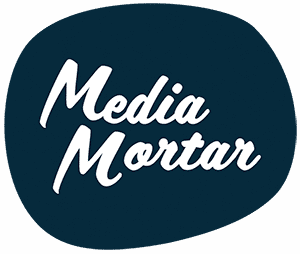
If we had a dollar for every person who told us “I don’t need an online strategy”, we’d be swinging in hammocks on an island far away.
The short answer and premise for the next 1000 words is this: if you’re selling a product or service to customers, an online strategy is a non-negotiable for your business.
In Australia alone, 88% of our population is online and 69% are active social media users (We Are Social, 2018 Digital Report). So without an online strategy you’re not just fishing without dynamite, you’re fishing without bait.
The good news is that setting an online marketing strategy isn’t as tricky as it sounds. It boils down to a plan that will have your audience buying your product, service or tickets – and going for your brand hook, line and sinker.
If you like where this is going, settle yourself in for our tips for writing your online strategy.
1. Write a marketing plan
 It all begins with a marketing plan. Your marketing plan doesn’t need to be a tome, filled with pie graphs and Gantt charts. Hell no.
It all begins with a marketing plan. Your marketing plan doesn’t need to be a tome, filled with pie graphs and Gantt charts. Hell no.
Just Follow the KISS (Keep It Simple Stupid) theory with these inclusions – even if it means your marketing plan looks more like a shopping list than a governing document for the business:
Step 1:
Identify your target market – who are you selling to and why would they purchase from you? If you’re having trouble identifying ‘your people’, check out our Social Media Handbook which has a whole appendix to troubleshoot this problem.
Step 2:
Set out your business goals and objectives for the next 12 months and ensure they are measurable and achievable. Put simply – what do you want to achieve? Do you want more followers in your database? More revenue? Sell the business? More efficiency? Something else? For more guidance, check out this blog post about how to set your marketing KPIs for your business.
Step 3:
Once you know who you are talking to and what you’d like them to do (step 1 and 2), it’s time to determine a marketing strategy. Forget the scary ‘S’ word, this is about how you plan on reaching your customers, who likely form part of the 88% and hang out online.
If you’re looking for something a bit more detailed than our three step strategy, the Australian Government has a great online template to get you started.
2. Build your customer personas
As marketing guru and author Seth Godin says, “everyone is not your customer and you cannot market to everyone the same way”.
This means you need to know who you’re targeting and where to place your marketing efforts – customer personas (aka little biographies that personify your customers based on real data you’ve gathered from your existing clients) can help with this.
For example, if you’re selling a beach resort holiday, your customer persona could be Holly Holiday, a 25 year old office worker in Brisbane City who is dedicated to climbing the corporate ladder and rarely takes a break (even though she needs one).
Your marketing challenge has narrowed from trying to capture the whole world who wants a holiday, to how you will capture Holly Holiday’s attention and what marketing content will likely encourage her to take a holiday at your beach resort.
If you need assistance finding or writing your personas, our content crew can help.
3. Identify your customer acquisition process
If you’re looking to attract new customers, the first place to start is a deep dive of your current customer journey. Map how your existing customers interact with your business from finding you, right through to paying their final invoice and beyond.
Your starting point is how customers currently find you. Are they coming through from word of mouth? Is it blog content with a strong SEO component? Social media ads targeting potential customers?
Then, once you have the customers attention and they’ve made a purchase with you, what experience are you offering them through the booking transaction? Are they receiving personalised service from you to get them excited for their experience?
After their experience, did you give them the most amazing service that will leave them so satisfied they may want to book another experience? Or refer a friend or even write a positive review online?
By identifying each of the touchpoints you have with your customers, you can start to plot out your online strategy – because your strategy needs to connect with the customer before, during and after their purchase with you.
4. List your current online activities
Like all business owners, there’s only a number of business assets at your fingertips. Start by listing your current online activities and assets and what you’re doing to attract potential customers to your business.
List these out so you can see an overview of your online marketing activities – you might be surprised to see how much work you’ve already been doing! Here’s a free download to a marketing channel asset audit template we’ve prepared earlier to make it easier to spot any marketing gaps.
After a self-assessment, it might be a good time to look at what online tools you can use to support your online activities. Tools such as social media scheduling tools, email marketing software and online booking/ticketing functionalities to make your online marketing techniques seamless (and make your life a little easier too).
5. Planning your online strategy
 With targets set on your audiences back (step 1 and 2) and your marketing weapons in your hands (step 3 and 4), you’re ready to plan and launch your online strategy with bullseye accuracy.
With targets set on your audiences back (step 1 and 2) and your marketing weapons in your hands (step 3 and 4), you’re ready to plan and launch your online strategy with bullseye accuracy.
For example, if your goal is to grow your online sales you might increase your regular eNews sends, offer sale codes, introduce (and market) AfterPay and make targeted social media posts promoting your product using Instagram and Facebook’s shop function.
7. Attack of the strategy
With your strategy in place, create a plan of attack and put these ideas into action!
We always recommend creating a six or 12 month action plan (plan any longer and your digital marketing techniques could well be out of date!) on what online activities you’re going to achieve and when you plan on instigating them.
This doesn’t need to be fancy. It could be something as simple as a spreadsheet that’s broken down into daily, weekly, monthly, quarterly or annually marketing activities – whichever system works for you.
Remember your online strategy shouldn’t just be social media. Social media is just one tool to support what you sell.
8. Reporting and measurement
Finally, track your online marketing activities to see what worked and what didn’t work. Whether you use Google Analytics for your website, eNewsletter statistics or social media engagement, it’s important to measure and review your marketing activities to ensure you’re on track with supporting your business goals.
Remember, some marketing techniques take time and might not command instant results.
Happy strategising!

By Kristy de Git
If they were handing out PHDs for organisation, Kristy would be first in line to collect the scroll. She’s master of a to do list, which is why she’s aptly in charge of content at Media Mortar.

Recent Comments